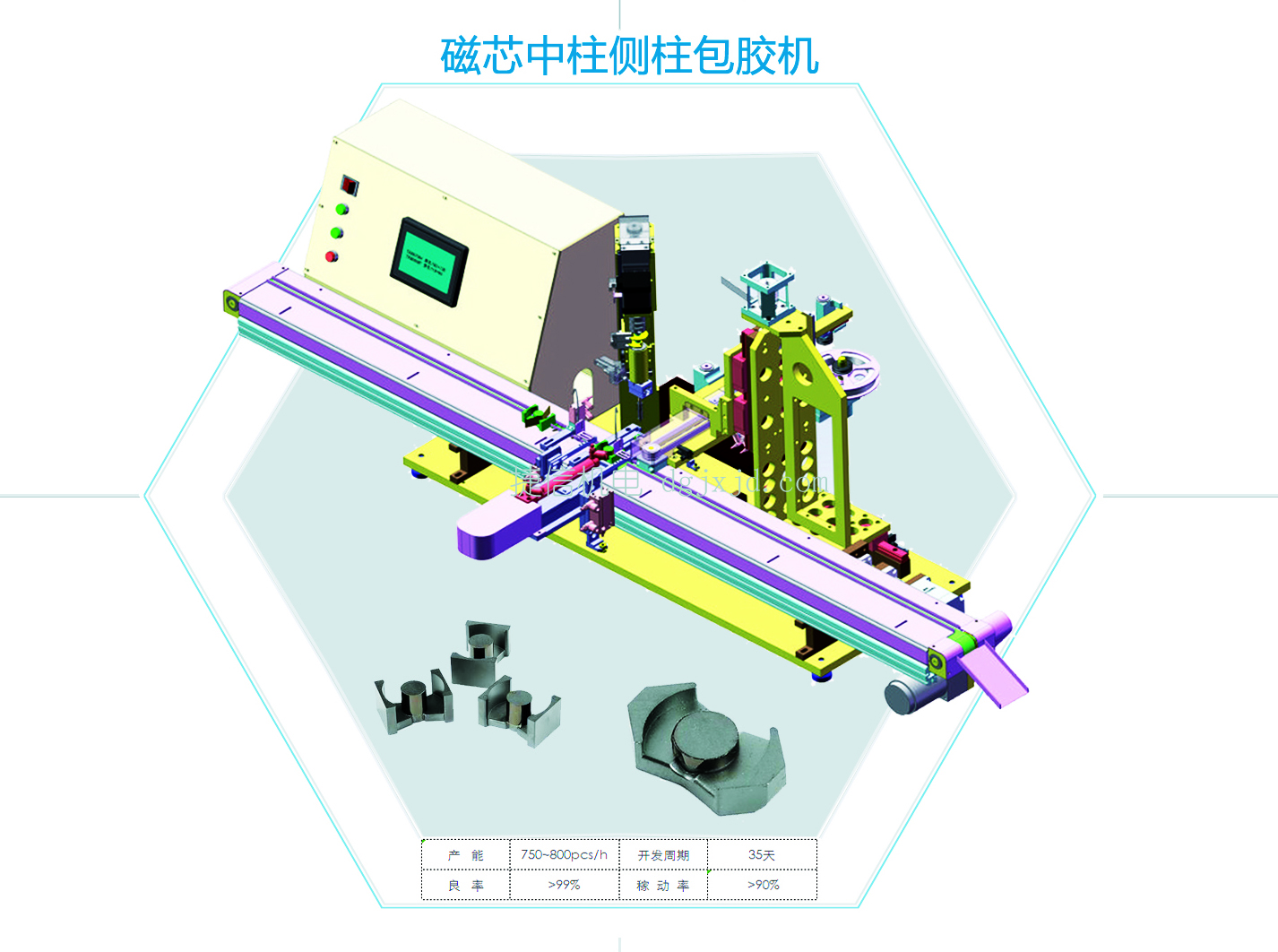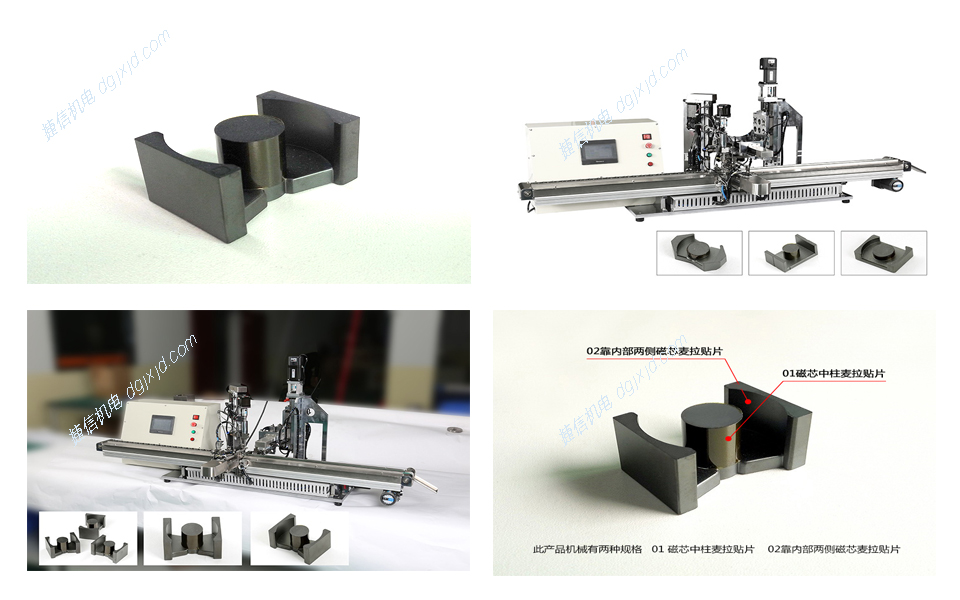
1. Controller: the brain of the automated factory
Commonly used controllers in automated factories are plc, industrial controllers.
Controller (English name: controller) refers to the main circuit or control circuit in accordance with a predetermined order to change the wiring and change the resistance value of the circuit to control the motor start, speed, braking and reverse the main order device. By the program counter, instruction register, instruction decoder, timing generator and operation controller, it is issued by the order of the "decision-making body", that is, to complete the coordination and command of the operation of the entire computer system.
ProgrammableLogicController, which employs a class of programmable memories for storing programs internally, executing user-oriented commands such as logic operations, sequential control, timing, counting and arithmetic operations, and controlling various types of machinery or production processes through digital or analog inputs/outputs.
IndustrialPersonalComputer, i.e. industrial control computer, is a general term for a tool that uses a bus structure to detect and control production processes and electromechanical equipment and process equipment. IPC has important computer attributes and characteristics, such as having a computer CPU, hard disk, memory, peripherals and interfaces, and operating systems, control networks and protocols, computing power, friendly human-machine interface. Industrial control industry products and technologies are very special, belonging to the intermediate products, is to provide reliable, embedded, intelligent industrial computers for various other industries.
2. Robotics: the determined executor of automated factories
A robot is a machine device that performs work automatically. It can either be directed by a human being, run a pre-programmed program, or act according to a program of principles developed with artificial intelligence technology. Its task is to assist or replace human work, such as production, construction, or hazardous work. Robots generally consist of actuators, drives, detection and control systems and complex machinery.
3. Servo motor: the muscle that provides power for automated factories
Servomotor (servomotor) is an engine that controls the operation of mechanical components in a servo system, and is a subsidized motor indirect variable speed device. Servomotor can make the control speed, position accuracy is very accurate, can be converted into voltage signal torque and speed to drive the control object. Servo motor rotor speed is controlled by the input signal, and can respond quickly, in the automatic control system, used as an executive element, and has a small electromechanical time constant, high linearity, starting voltage and other characteristics, can be converted to the received electrical signal into an angular displacement on the motor shaft or angular velocity output. Divided into two categories of DC and AC servo motors, its main feature is that there is no self-rotation phenomenon when the signal voltage is zero, and the rotational speed decreases uniformly with the increase of torque.
Servo system (servomechanism) is an automatic control system that enables the output controlled quantities such as position, orientation, and state of an object to follow the arbitrary change of the input target (or given value). Servo mainly rely on pulses to position, basically can be understood in this way, the servo motor receives 1 pulse, will rotate 1 pulse corresponding angle, so as to realize the displacement, because, the servo motor itself has the function of sending out pulses, so the servo motor will send out the corresponding number of pulses for every angle of rotation, in this way, and the servo motor receives pulses to form the echo, or called closed loop, in this way, the The system will know how many pulses are sent to the servo motor, and at the same time, how many pulses are received back, so that the motor rotation can be controlled very accurately, so as to achieve accurate positioning, which can reach 0.001mm. DC servo motors are divided into brushed and brushless motors. Brushed motor has low cost, simple structure, large starting torque, wide speed range, easy to control, requires maintenance, but maintenance is not convenient (change carbon brushes), generates electromagnetic interference, and has environmental requirements. Therefore it can be used in common industrial and civil occasions which are sensitive to cost.
4. Sensors: Tactile sense of feeling external information in automated factories
(transducer/sensor) is a detection device, can feel the measured information, and can feel the information, according to certain laws, transformed into electrical signals or other required forms of information output to meet the information transmission, processing, storage, display, recording and control requirements. It is the first link to realize automatic detection and automatic control.
In modern industrial production, especially in the automated production process, to use a variety of sensors to monitor and control the various parameters of the production process, so that the equipment works in a normal state or the best state, and make the product to achieve the best quality. Therefore, it can be said that, without a large number of excellent sensors, modern production has lost its foundation.
5. Inverter
Variable-frequencyDrive is the application of variable-frequency technology and microelectronics technology, by changing the frequency of the motor power supply to control the AC motor power control equipment. VFD is mainly composed of rectifier (AC to DC), filter, inverter (DC to AC), braking unit, driving unit, detection unit, microprocessor unit, etc. VFD relies on the internal IGBT to control the motor. Frequency converter rely on the internal IGBT on and off to adjust the output power supply voltage and frequency, according to the actual needs of the motor to provide the required power supply voltage, and thus achieve energy saving, speed regulation, in addition, the frequency converter has a lot of protection functions, such as over-current, over-voltage, overload protection and so on.
6.Solenoids
Electromagneticvalve is an industrial device controlled by electromagnetism, an automation basic element used to control fluids, belonging to the actuator and not limited to hydraulics and pneumatics. Used in industrial control systems to adjust the direction of the medium, flow, speed and other parameters. Hobby mechanical partners can pay attention to intuitive learning mechanical this micro-signal. Solenoid valves can be used with different circuits to achieve the desired control, while the precision and flexibility of control can be guaranteed. There are many kinds of solenoid valves, different solenoid valves play a role in different positions of the control system, the most commonly used are check valves, safety valves, directional control valves, speed regulating valves and so on.

7.Industrial cameras: the eyes of the automated factory
Industrial camera is a key component in the machine vision system, its most essential function is to convert the optical signal into AFT-808 Small HD Industrial Camera an ordered electrical signal. Selecting the right camera is also an important part of the machine vision system design, the camera's is not only a direct decision on the captured image resolution, image quality, etc., but also directly related to the mode of operation of the entire system.
Industrial cameras are generally installed in the machine assembly line instead of the human eye to do the measurement and judgment, through the digital image ingestion target converted into image signals, transmitted to the special image processing system, the image system of these signals to carry out a variety of operations to extract the characteristics of the target, and then according to the results of the discrimination to control the scene of the equipment action.
8.Instrumentation
Instrumentation instrumentation is used to detect, measure, observe, calculate various physical quantities, material composition, physical parameters of the apparatus or equipment. Vacuum leak detector, pressure gauge, length gauge, microscope, multiplier, etc. are instrumentation. Broadly speaking, instrumentation can also have automatic control, alarm, signaling and data processing and other functions, such as for industrial production processes in the automatic control of pneumatic control instrumentation, and electric control instrumentation, as well as centralized instrumentation control system also belongs to the instrumentation.
Because of the improvement of microelectronic skills, instrumentation products are further intermingled with microprocessor and PC skills, the digitalization and intelligence of instrumentation have been progressing from time to time, so that multimedia skills, human-computer interaction, trance throttling, artificial neuron collection and other new skills have been widely used in modern instrumentation.
Automated factories require the application of a variety of instrumentation, such as the measurement of pressure, level, flow, temperature and some other parameter values required for the control process, you need the relevant instrumentation.
9.automation software
Automation software plays an important role in the industrial system, its main role is to carry out scheduling automation control of the production process, the industrial control system in technology, industry, application of high-speed development, has been gradually with a high degree of integration, intelligence, network development trend and characteristics. Due to the trend of industrial control system management and control integration control engineering network all rights reserved, so that the industrial control system and the traditional IT management system and the Internet is connected, the internal also more and more use of common software, common hardware and common protocols. The more common is SCADA automation software.
Supervisory controllanddataacquisition, is what we call data acquisition and monitoring system. It is mainly supported by computer technology, various production processes for scheduling automation control system. At present, SCADA software not only plays a great role in the petroleum, chemical and other industries in the data and information collection and supervision and control, but also widely used in water conservancy and electric power business supervision, SCADA automation software, can be in the case of unattended, automated production for a long time to accurately monitor the instruciton, and from it to get the effective information data for the supervision of the administrator to provide powerful evaluation of the reference. Evaluation reference.
10.control cabinets
Control cabinet and includes many kinds, there are electrical control cabinet, inverter control cabinet, low voltage control cabinet, high voltage control cabinet, water pump control cabinet, power control cabinet, explosion-proof control cabinet, elevator control cabinet, PLC control cabinet, fire control cabinet, brick machine control cabinet and so on.
Automation factory involves electrical, frequency conversion, power supply, pumps and other control cabinets, according to different needs to choose different control cabinets, to achieve different control functions.